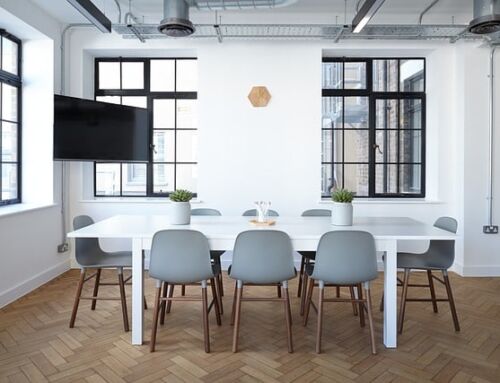Organizations are tasked to make the work environment comfortable and motivating. Going beyond that is ensuring a space where everyone feels included and where respect for each person is highlighted. This is the concept of a safe space that has transformed entire industries in the past few years.
It’s not just a trend that employers need to follow but it has positive implications across different areas of HR, from improving productivity to promoting innovation. It’s only a matter of following the right approaches to implementing a safe space. If that’s your focus for this year and the next, then the guide should serve as your starting point:
Image by Anna Shvets on Pexels
Defining Safe Spaces: Critical Concepts
Let’s first start by talking about the very definition of safe spaces. According to this article from Vox, the need for safe spaces started as movements on college campuses that aimed to create greater opportunities for diversity and inclusion.
This involves creating an environment free from discrimination, where members of the LGBTQ community can freely express themselves, and equal opportunities are afforded to all. In another sense, safe spaces go beyond physical safety and touches on building an emotional refuge and a place for empowerment.
The term has extended to the corporate world where companies include work spaces as part of their employee engagement initiatives. This comes with an increasing focus on improving the mental well-being of employees and addressing discriminatory behavior within organizations.
By being able to create a safe space for your employees to thrive in, you’re not only valuing their talents regardless of their backgrounds but you’re also maintaining a respectful environment for everyone. Some may call it ambitious but developing a safe space is possible when the right strategies are followed.
Steps to Building a Safe Space
When it comes to creating a respectful refuge for everyone in your company, you will need an action plan carefully crafted with the help of change managers and your HR department. Sure enough, many paths can lead to safe spaces, but the following should be present:
1. Include mental health services
Unlike before, mental health has been regarded as a major factor affecting employee engagement and morale, so much so that the American Psychological Association reported that 71% of employees believe that their employers are more concerned for their mental health than in the past. With this in mind, it helps if you can incorporate mental health interventions.
These may include providing employees with resources on mental health and Mental Health Days that allow them to take time off work. You should also develop an employee assistance program that offers counseling and psychiatric support that is also included in their HMO.
2. Opt for physical improvements
In most cases, employee inclusion and collaboration are supported by the physical environment. Working in cubicles creates a culture of mistrust and competition as these workstations limit social interactions. Instead of that, go for an open office layout complete with standing desks, large windows for maximizing natural light, and shared workspaces.
However, this shouldn’t compromise the need for privacy among your employees. For this reason, consider installing employee lockers and personal cabinets. You should also implement clear policies for sharing personal data between employees and ensure that the HR department can secure confidential employee information.
3. Train your staff
Creating a safe space won’t be possible when everyone is not in the same boat on the issue. Your company must prioritize educating employees on the importance of cultural awareness and acceptance and empowerment of individuals across all genders. This would mean investing in quarterly sensitivity seminars that can double as team-building activities. Ensure that all employees can participate in these initiatives so they can break down invisible barriers.
Apart from these, your organization should also provide ample information on discriminatory practices. These may cover issues of workplace harassment and bullying based on another person’s gender, cultural background, and social standing. Along with this, you will need to enhance enforcement by setting guidelines for how the HR department should handle reports of discrimination and harassment.
4. Encourage employees to speak out
You know you have successfully built a safe space in your company when employees feel empowered to talk about the issues and concerns they have encountered. For this, opt to maintain an open-door policy that makes your office accessible to those who wish to report physically and emotionally harmful activities by co-workers without fear of reprisals. You will need to treat these reports with utmost confidentiality as you work toward possible actions.
As part of your workplace culture, organize regular town hall meetings where you not only communicate updates coming from the higher-ups but also lay down recurring issues and problems. Have all employees get the chance to speak and offer solutions. Take their contributions into account as these offer valuable insights to improving the office environment. Not only that but having their voice heard lets employees know that the management values their voice.
5. Monitor and get feedback
Once you have implemented your initiative for building safe spaces, it’s only a matter of tracking its success in the long run. This would mean observing how your employees interact with each other. One-on-one meetings are also great in gauging an employee’s morale and desire to collaborate. During these interactions, ask them if there’s any need to improve the company’s facilities and if they need any support in their professional development.
Endnote
Call it a fad but creating safe spaces has real-world benefits, especially when it comes to improving morale and productivity. Use this guide and value your employees not just as workers but as human beings.







Leave A Comment